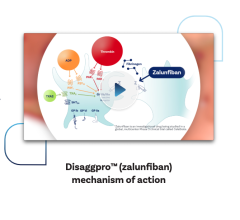Feature | November 15, 2013
ACC/AHA Release New Guidelines for Assessing Cardiovascular Risk
Broader assessment may improve identification of at-risk patients, focus prevention strategies
November 15, 2013 — The American College of Cardiology (ACC) and the American Heart Association (AHA) released a clinical practice guideline to help primary care clinicians better identify adults who may be at high risk for developing atherosclerotic cardiovascular disease, stroke and who thus may benefit from lifestyle changes or drug therapy to help prevent it. Under the guidelines, patients generally would be put on a cholesterol-reducing statin medication based on a formula that estimates their risk for cardiovascular disease. This is a major change from previous guidelines that placed more emphasis on patients’ cholesterol numbers.
"This is very big news," said Binh An P. Phan, M.D., director, Loyola’s Preventive Cardiology and Lipid Program. "These new guidelines could dramatically affect how cholesterol is treated."
The guidelines could simplify the process of identifying patients who could benefit from statin therapy, said Loyola cardiologist Ivan Pacold, M.D, director of cardiology, Loyola Gottlieb Memorial Hospital.
"The guidelines emphasize that starting and keeping patients on statin treatment is more important than looking at the actual cholesterol-lowering effect of the treatment," said Pacold.
However, the guidelines are controversial, as the National Lipid Association, a multidisciplinary medical society that focuses on controlling cholesterol, has not endorsed them. The guidelines are intended to meet the needs of patients in most circumstances. They are not meant to be a replacement for clinical judgment.
"For the many questions regarding complex lipid (cholesterol) disorders that are beyond the scope of our systemic evidence review, or which little or no RCT [randomized clinical trial] data are available, it is anticipated that clinicians with lipid expertise can contribute to their management," the guidelines say.
The guideline, last updated in 2004, has been broadened to include assessment for risk of stroke as well as heart attack as well as provide new gender- and ethnicity-specific formulas for predicting risk in African-American and white women and men. The recommendations also help clinicians and patients look beyond traditional short-term (10-year) risk estimates to predict an individual’s lifetime risk of developing heart disease and having a stroke.
"Cardiovascular disease caused by atherosclerosis remains the number one cause of death, a major cause of disability and a huge source of health care costs," said Donald Lloyd-Jones, M.D., Sc.M., senior associate dean, chair and professor of preventive medicine, Northwestern University Feinberg School of Medicine and co-chair of the work group that developed the new guidelines. "We must do a better job of preventing it. That means being smarter in our approach to determine who should get medications, for example."
Roughly one-third of U.S. adults who have not yet been diagnosed with heart disease and have not had a heart attack or stroke are at high enough risk that they could benefit from primary prevention with medications, including cholesterol-lowering statins, to lower their risk, according to authors. A primary goal of the new guideline is to help ensure preventive treatments including lifestyle changes and drug treatment are used in those most likely to benefit without undue risk or harm. To do this, the new guideline developed high-quality risk assessment methods that use risk factors known to lead to atherosclerosis — such as age, cholesterol levels, blood pressure, smoking and diabetes — that primary care providers can easily collect. This information is then integrated into a risk score to guide care and prompt risk discussions with patients.
"The vast majority of heart attacks and strokes could be prevented if people knew their risk and did the things we know are effective in reducing that risk, but patients and doctors alike often underestimate cardiovascular disease risk, especially when considered over the lifespan,” said David Goff, Jr., M.D., Ph.D., dean and professor, Colorado School of Public Health and co-chair of the work group. "This document offers clinicians the most up-to-date, comprehensive guidance about assessing that risk, so they can work with their patients to prevent heart attack and stroke."
Inclusion of Stroke Risk
In the past, cardiovascular risk assessment included only coronary heart disease (CHD). Yet, stroke is the fourth leading cause of death in the United States. Women and African-Americans, in particular, are at much greater risk for stroke.
"We were leaving a lot of risk on the table by focusing on coronary heart disease alone,” said Lloyd-Jones. "But by including stroke in our new algorithm, we can better calculate overall cardiovascular risk, especially in women and African-Americans."
The risk for chronic heart failure was not included in the current algorithm because existing data were not sufficient to allow development of a high-quality risk equation for this complex condition.
Development of Sex- and Race-specific Formulas to More Accurately Quantify Risk
The report includes new pooled-cohort risk equations to better represent the effect of atherosclerosis risk factors for specific gender and ethnicities. Risk equations recommended in the past were based on data only from non-Hispanic whites. These new formulas are derived from a broad group of existing data sets including the Framingham Heart Study, the Atherosclerosis Risk in Communities Study, the Cardiovascular Health Study and the Coronary Artery Risk Development in Young Adults study — all National Heart, Lung and Blood Institute-sponsored, community-based cohort studies.
"There is some evidence that the risk factors we know about — age, smoking, high cholesterol, blood pressure and diabetes — have somewhat different effects in women and men, and certainly in whites and African-Americans," said Lloyd-Jones. "These [equations] also allow us to be selective and smart about whom we identify as being at high enough risk for cardiovascular disease that it would merit starting drug therapy to help prevent it. And we know that the higher someone’s risk, the more likely that person is to benefit from being on a medication."
As such, the authors recommend the new equations be used to assess risk in non-Hispanic whites and African-Americans ages 40 to 79. The hope is that these formulas will be incorporated into electronic health records (EHRs), helping clinicians automatically and easily calculate a patient’s risk and discuss individualized options for lowering that risk.
Assessing Lifetime Risk
Because the risk for developing atherosclerosis accrues over time and is a function of lifelong exposure to risk factors, the authors say it is really never too early to focus on determining risk. The guideline provides additional methods for determining a patient’s lifetime risk that are intended particularly to help younger adults understand how they can reduce their risk for heart disease and stroke.
Weighing in on the Usefulness of Newer Risk Measures
The work group was also charged with making recommendations about the clinical usefulness of new markers of risk (conditions that can be measured in the urine, blood or by computed tomography [CT] scan). Based on extensive review of the literature, the existing evidence did not support using these new risk measures routinely in risk assessment. However, four markers stood out as potentially helpful to use when patients or providers are uncertain about risk-based treatment after — and only after — the quantitative risk has been calculated using the pooled equations.
These measures include family history of premature cardiovascular disease; coronary artery calcium score, which can show the presence of plaque in artery walls; high-sensitivity c-reactive protein levels (higher levels have been associated with heart attack and stroke); and ankle brachial index, the ratio of the blood pressure in the ankle compared to blood pressure in the arm.
"These showed the greatest promise and may help inform treatment decision-making when patients or providers are on the fence after quantitative risk assessment," Goff said.
Authors say more research is needed to better understand the optimal means for using short- and long-term cardiovascular risk assessment in all race/ethnic groups, across different ages and between men and women.
The National Heart, Lung and Blood Institute (NHLBI) of the National Institutes of Health (NIH) convened the expert panel that wrote the report. At the invitation of the NHLBI, the American Heart Association and American College of Cardiology assumed the joint governance, management and publication of the guideline in June. Committee members volunteered their time and were required to disclose all healthcare-related relationships, including those existing one year before the initiation of the writing project.
The full report "2013 ACC/AHA Guideline on the Assessment of Cardiovascular Risk" was published on the websites of the ACC: content.onlinejacc.org/article.aspx?doi=10.1016/j.jacc.2013.11.005
For more information: www.cardiosource.org


 November 19, 2025
November 19, 2025 









